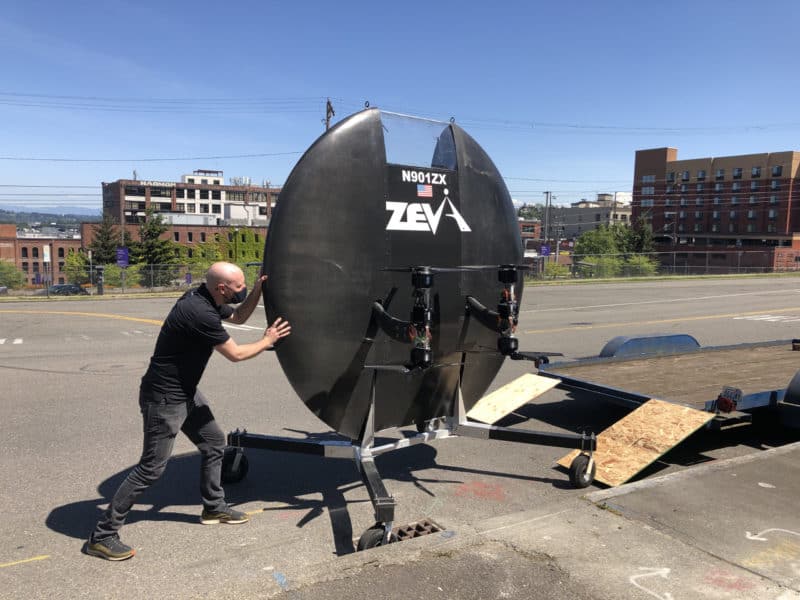Imagine hopping into a zero carbon emission, personal aircraft and zipping skyward over the traffic and congestion to land conveniently right at the office.
It’s long been the stuff of science fiction but a team of WSU researchers is testing components that one day might make that dream of a personal, electric flying machine a reality.
“I would say if you’ve ever tried to drive from downtown Seattle to the airport, I think that’s probably enough justification for the project right there,” said John Swensen, associate professor in the School of Mechanical and Materials Engineering.
Swensen and Professor Konstantin Matveev have received a grant from Washington’s Joint Center for Aerospace Technology Innovation (JCATI) to work with ZEVA Aero, a Tacoma-based start-up company, on the single-passenger, electric vertical takeoff and landing (eVTOL) aircraft. The WSU team, including four students, is studying aerodynamic configurations to optimize the vehicle’s thrust and controls. JCATI supports research relevant to aerospace companies and provides industry-focused research opportunities for students.
While generations have dreamed of easy-to-use personal flying machines that could take people directly from point to point, the biggest challenge has been having enough thrust to get someone off the ground, says Matveev. In recent years, advances in motors, control systems, and ever-lighter materials are helping close the gap.
“It’s possible to have enough power in smaller packages, so you can install several small propellers that will enable this transportation technology,” said Matveev.
ZEVA Aero, led by WSU alumnus Stephen Tibbitts, has completed a working prototype of an eVTOL vehicle that they hope will be used initially by first responders and emergency services. Their prototype is designed to fly at 160 miles per hour for up to 50 miles. Their unique vehicle acts like a hovering helicopter initially when it’s lifting off and then tilts horizontally to more efficiently fly like a plane, taking advantage of the reduced drag, said Swensen.
“It is exciting to work with WSU researchers on this project to push forward this transformative transportation technology,” said Tibbitts, a 1982 electric engineering graduate. “John and Konstantin and their teams of students are doing excellent work. It is very helpful to have the state investing in student development in aerospace, which can have lasting effects on regional competitiveness in the burgeoning eVTOL industry.”
The WSU researchers are helping to model and test the aircraft’s propulsion system. Swensen has built a test stand in which he is testing propellers under lab conditions, measuring their torque and efficiency. Matveev is responsible for modeling and computation, doing simulations of airflow around the propellers to optimize the propulsion system. The researchers meet regularly with company personnel to report on their work.
For those who are wondering when we might have our own electric flying machines, Swensen is hopeful about seeing the vehicles happen “sooner rather than later,” especially with any new developments in more efficient and lightweight batteries.
“Whenever somebody makes a breakthrough on storing more electricity in a smaller amount of space with less mass, I think that that would be a big game changer to help it happen faster,” he said.

